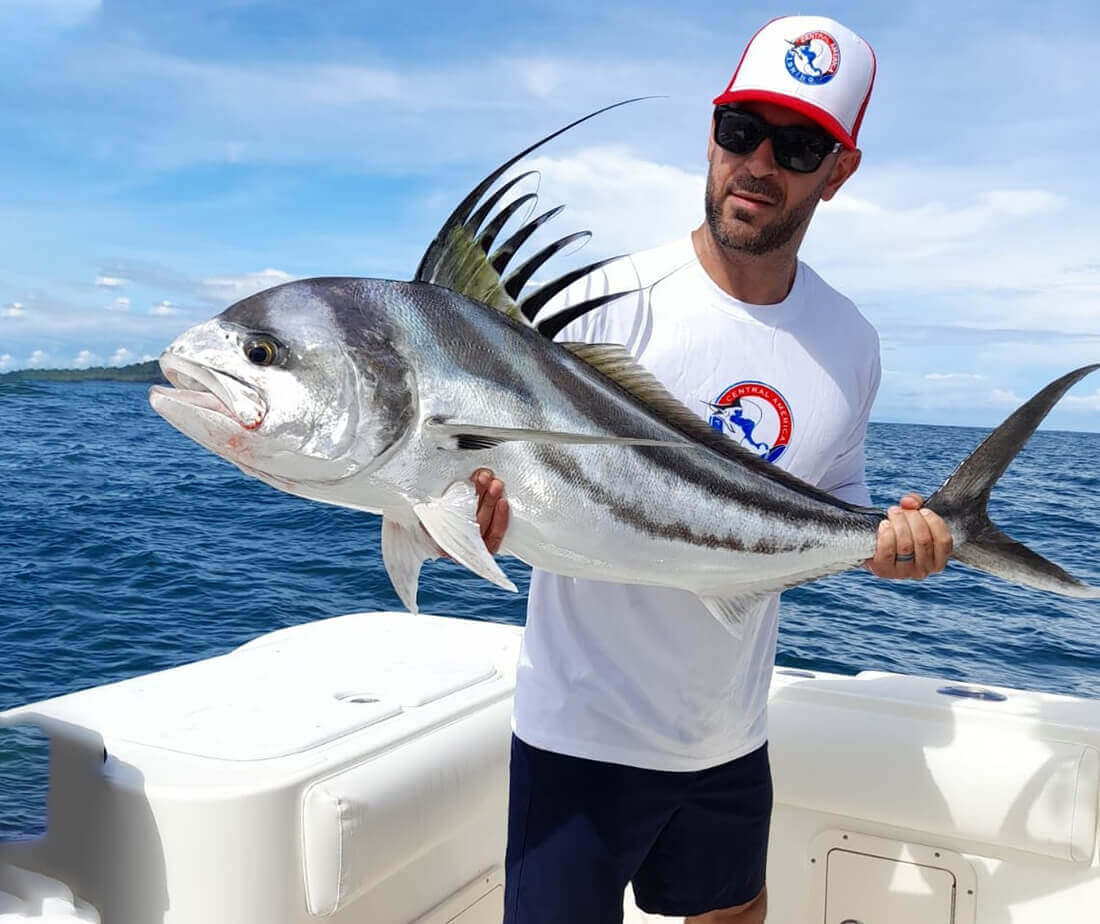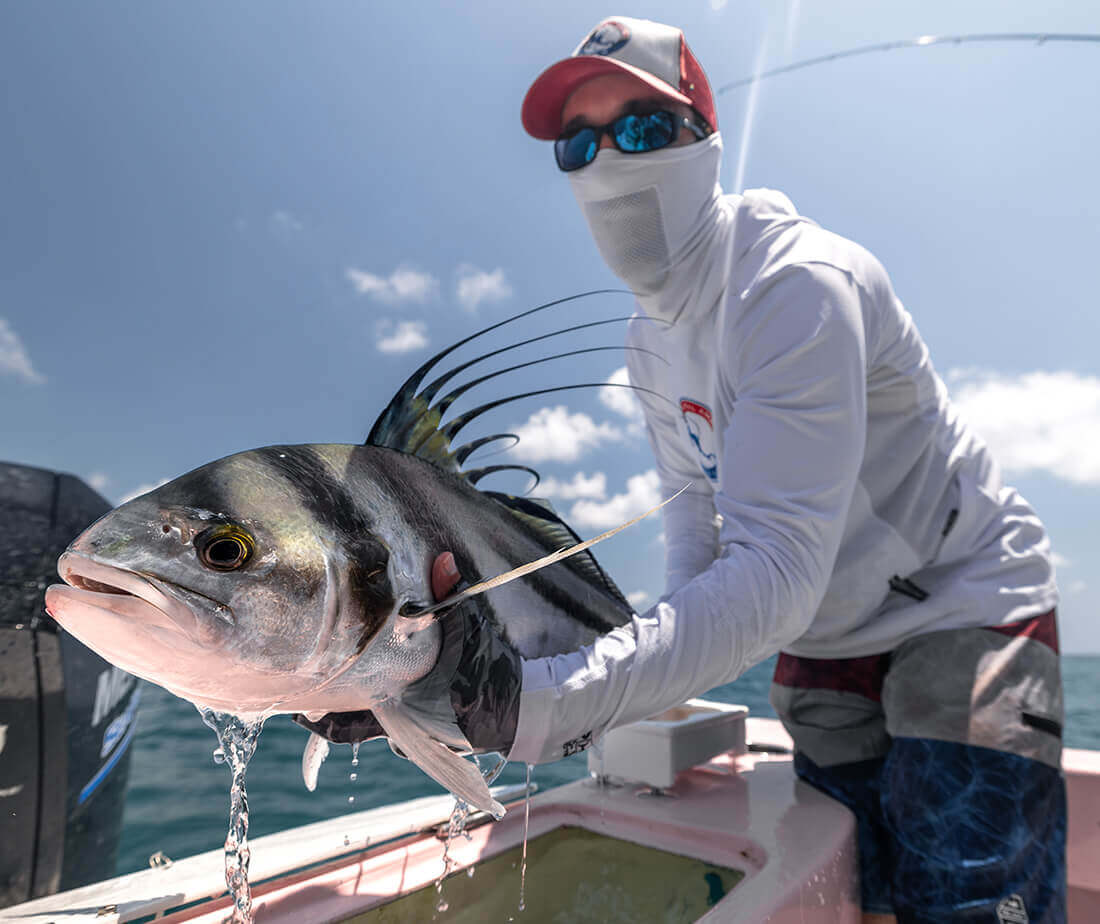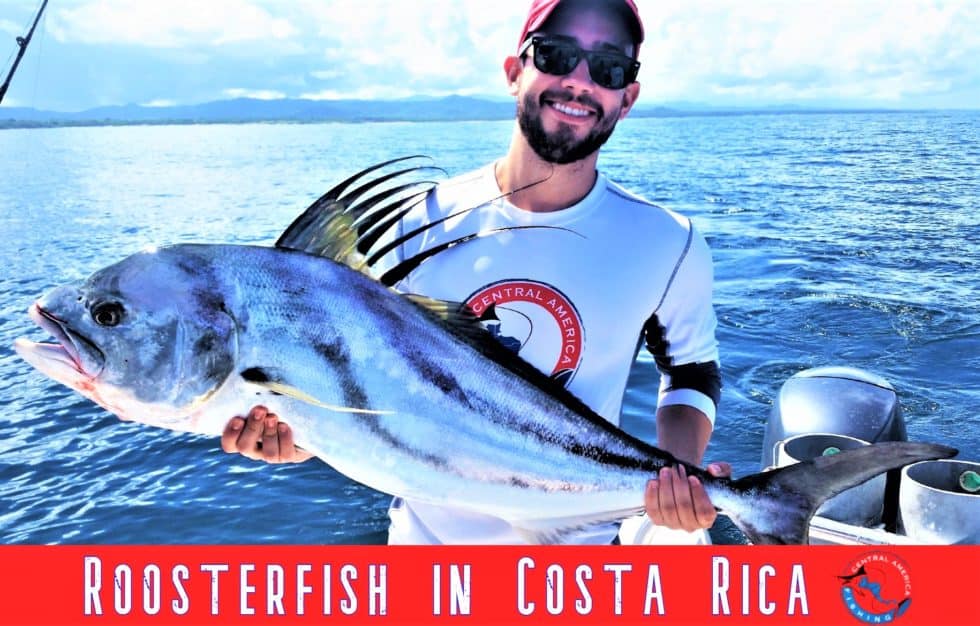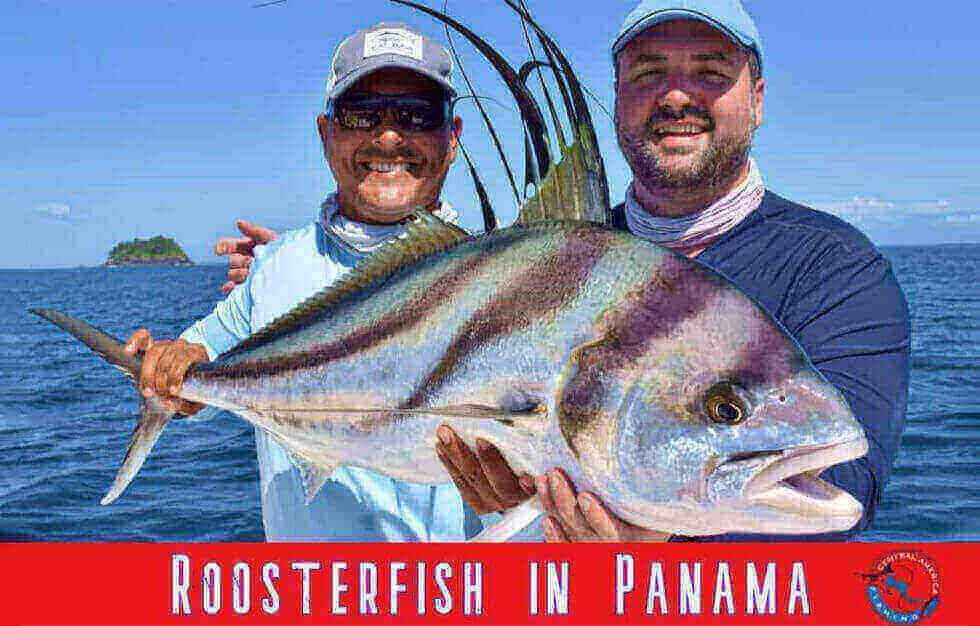Roosterfish
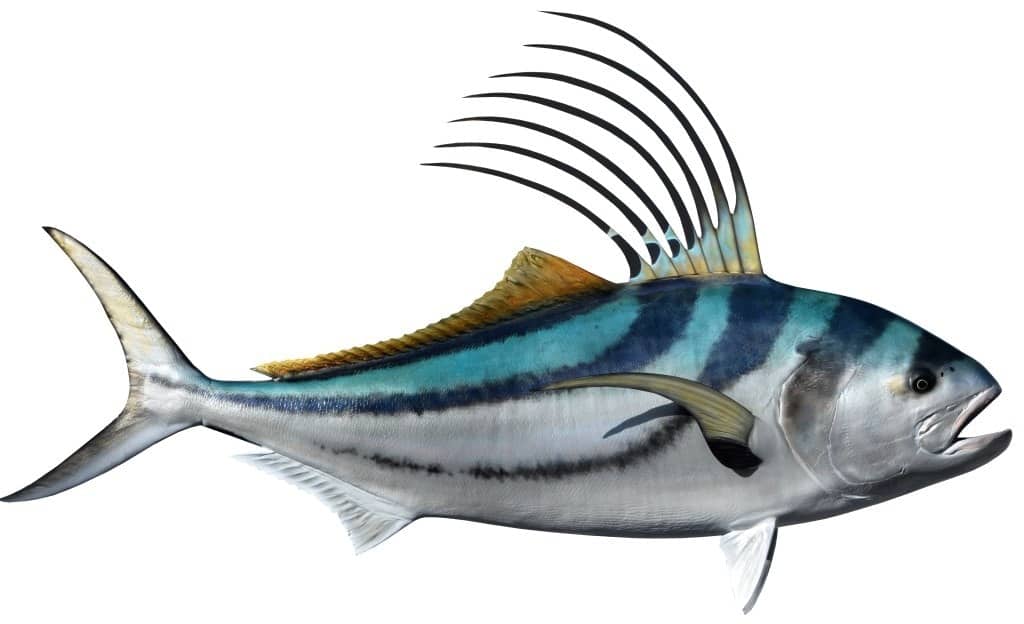
It would be stating the obvious to say that the defining characteristic of the roosterfish is their unique dorsal fin. Made up of seven spines, it resembles the comb of a rooster and is how they got their name in both languages (they are called ‘pez gallo’ in Spanish). The majority of the time the dorsal fin remains at rest in a deep groove along the top of the rooster’s back, but when excited it will raise it to appear larger and help herd bait fish they are after. Roosterfish feature two dark, wide stripes diagonally along their flanks and another that runs along their sides to the base of the tail. These bands range in color from dark blue to purple to black which add to it’s beauty in pictures. Roosterfish are also very unique in that their swim bladder makes contact with their inner ear, which enhances their ability to hear. They are the only known fish to have this feature.
Most roosterfish in Central America are in the 20-50 lb range, but several times a year we trophy fish that weigh well over 50 lbs. By law roosterfish in Central America are not catch and release and locals will eat them, but 99% of roosterfish we catch on sport fishing charters we release to be caught another day.
What Do Roosterfish Eat?
The Best Ways to Catch A Roosterfish
Any captain here will tell you that the best way to catch roosterfish in Central America is with live bait. The tried and true method is slow trolling with live bait like blue runners, lookdowns, and even small bonito around the rocky islands and reefs that they patrol.
For many anglers, the dream of catching a roosterfish on a topwater lure is too hard to pass up. Seeing their iconic comb-like dorsal fin appear behind your popper and their erratic behavior will get anyone’s heart pumping. Some of our favorite lures for catching roosterfish are Yo Zuri bull popper, Halco Roosta poppers, and Yo Zuri crystal minnows. Color patterns that mimic their natural prey of flying fish, blue runner, sardines, and bonito are good ideas.
What is the World Record Roosterfish?
When is the Best Time to Catch Roosterfish?
Roosterfish are caught twelve months a year in Central America. Unlike pelagic species that are migratory and more seasonal, we catch roosterfish year round in Costa Rica and Panama. The most productive months for roosterfish are usually December through August, but the time of year you visit will determine where you should go to enjoy the best fishing. The dry season along the Pacific Coast is December through April, and that generally offers the best action as the water is clear blue and there are plenty of baitfish. At the start of the season in December we tend to see higher quantities of fish, but smaller sizes. It’s not uncommon to catch 10-20 roosterfish in a day in December, but many of those fish will be under twenty pounds. Big trophy roosters over 50 lbs can be caught any time of year, but that seems to happen more from Feb-to July. The months of September and October can be much slower for roosterfish because that is the peak of the rainy season. During this time of year, the rivers are dumping out tons of freshwater and the coastal waters turn green and are much cooler, which usually drives most of the roosterfish away.
Where is the Best Place to Catch Roosterfish?
Roosterfish are unique in that they are only found in the warm Eastern Pacific waters. Their range is from southern California to Peru, but their numbers are most prevalent here in Central America. Roosterfish are caught in the surf and over sandy bottoms, but they really seem to love rocky islands and reefs the most. They can also be caught near river mouths if bait is present, though they are not typically seen in brackish water like snook. Roosterfish are not migratory, typically they travel less than 300 miles in their lifetime, so good catch and release practices will ensure their survival and a long lasting bite for years to come. Two of the best countries in the world to catch them are right here in Costa Rica and Panama thanks to the combination of rocky islands and reefs, river mouths, and plentiful baitfish. While our boats in Guatemala and El Salvador also catch roosterfish, their numbers are not as consistently productive as Costa Rica or Panama.

